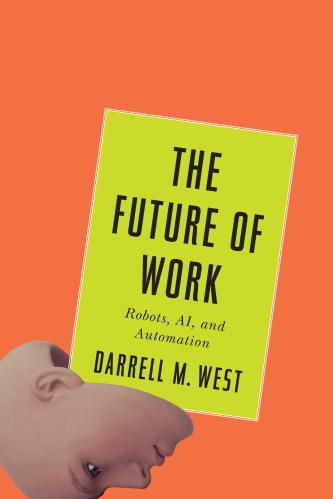Studies in this week’s Hutchins Roundup find that the spread of industrial robots in the U.S. has decreased employment and wages, higher bank capital doesn’t prevent financial crises but can mitigate their costs, and more.
Want to receive the Hutchins Roundup as an email? Sign up here to get it in your inbox every Thursday.
The spread of industrial robots has large negative effects on employment and wages
Using differences in exposure to industrial robots across local labor markets in the U.S., Daron Acemoglu of MIT and Pascual Restrepo of Boston University estimate that each additional robot leads between 3 and 5.6 workers to lose their jobs and each additional robot per thousand workers reduces wages by 0.25 to 0.5 percent. So far, they say, robots have reduced U.S. employment by 360,000 to 670,000 jobs – equivalent to reducing the employment-population ratio (now around 60 percent) by only 0.18 to 0.34 percentage points. But they caution that job loss would be much larger over the next two decades if robots spread as experts predict.
Higher bank capital cannot predict or prevent a financial crisis but can lower its costs
Using novel bank data on 17 countries from 1870 to 2013, Òscar Jordà of the San Francisco Fed, Björn Richter and Moritz Schularick of the University of Bonn, and Alan Taylor of the University of California at Davis show that higher bank capital ratios (capital as a share of risk-weighted assets) are unlikely to prevent financial crises. Financial crises are best predicted by tracking credit growth booms. Bank capital’s “main role appears to lie not so much in eliminating the chances of systemic financial crises, but rather in mitigating their social and economic costs—a distinct but arguably more important benefit,” the authors say.
Persistent monetary policy easing increases risk-taking behavior of banks and non-banks
Using firm-level data from 22 countries over 1998-2014, Stephen Cecchetti of Brandeis and Tommaso Mancini-Griffoli and Machiko Narita of the IMF conclude that prolonged monetary policy easing in a country leads to increased risk-taking behavior by that country’s domestic banks, insurance companies, investment banks, and asset managers, as measured by the ratio of debt to assets. Persistent monetary easing in the U.S. increases risk-taking by foreign financial institutions about as much as persistent monetary easing by their own central bank, they also find. The risk-taking behavior rises most quickly at the beginning of persistent monetary policy accommodation.
Chart of the week: By one prominent measure, consumer confidence exceeds its pre-crisis level
Quote of the week: “[I]s the Dodd-Frank Act as it exists today perfect?” asks New York Fed President William Dudley.
“I doubt it. What I tell people is we really want to be careful not to throw the baby out with the bathwater. What we want is a system where we have banks with adequate capital, adequate liquidity – number one – so the probability of a large bank failing is a lot lower today than it was back in 2006 and 2007. Number two, we want a system where if a large bank were to get into difficulty, we have the ability to resolve it in a way that it doesn’t threaten to take down the rest of the financial system… And the third thing we need is we need to a financial system that’s robust and resilient to bad economies, to financial stress… [T]here are definitely things that could be changed. I think you could definitely relax the regulatory burden on smaller banking organizations because I don’t think they pose a systemic threat to the U.S. financial system. I think you could take a look at certain regulations like the Volcker Rule to see if they could be administered in a less aggressive way. So, it’s not in my mind a question of Dodd-Frank or no-Dodd-Frank. I think it’s a question of better financial reform legislation.”











Commentary
Hutchins Roundup: Robots, bank capital, and more
Thursday, March 30, 2017